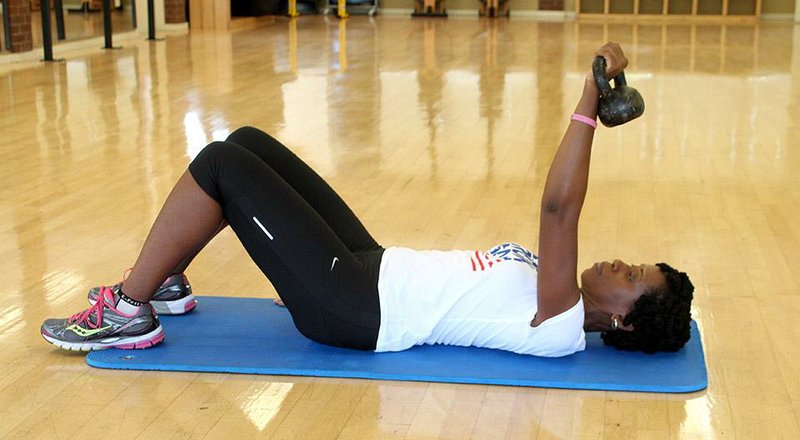Not many people make unilateral strength training exercises part of their routine, but they can have a meaningful effect on program outcomes. Specifically, the core musculature becomes more involved during many unilateral movements. That challenge can result in a body that's much more ready to handle whatever life or sports throws its way.
This week, I'll discuss the science behind unilateral strength training and also introduce one of my favorite single-arm exercises.
Given the disdain with which many abdominal exercises are viewed, it makes sense to challenge the core musculature throughout one's program as opposed to reserving a specified time for your hated crunches. (If you don't dread parts of your workout, you'll be more likely to do it.) And the core muscles are only marginally involved in traditional strength training anyway.
Unilateral (one side only) strength training is a fantastic way to increase the recruitment of core muscles in all kinds of exercises, for a number of reasons.
First, adding resistance to one limb shifts one's center of gravity so it's harder to stay balanced. If you load a heavy suitcase and hold it with your right hand on the right side of your body, you'll know what this means. Your body's natural tendency is to cave toward the resistance to reduce the amount of pressure on your core and back. To stay upright, your core muscles are required to fire constantly.
This is exactly the reaction that occurs with unilateral strength training.
In addition to the postural correction contractions the core performs during unilateral strength training, there's also an added benefit of extra fiber recruitment. For example, a traditional standing biceps curl with both arms would certainly require a lower back contraction to maintain postural position. A unilateral biceps curl, however, would require lower back and oblique abdominal contractions, which is a significant increase in the number of core muscle fibers recruited. Pretty cool, huh?
Nearly any traditional exercise can be converted to a unilateral movement with a little creativity. This week's spotlight is a Single Arm Kettlebell Press that really highlights the unique advantages of unilateral training.
1. Select a heavy kettlebell and lie on your back on an exercise mat with both knees bent.
2. Grasp the kettlebell with your left hand and hold it against your left shoulder.
3. Extend your right arm out with the palm down against the floor for balance.
4. Press the kettlebell up in a single arm chest press motion, but make sure you keep the right hip on the floor (this is key).
5. Perform one set of 12, switch sides and repeat.
Some may question whether performing this exercise might be more effective from a bench as opposed to on the floor, which is a valid question. The goal of keeping the right hip pressed down is highlighted because doing so requires a strong core contraction in the abdominals, obliques and lower back. The floor provides a nice point of reference for your hips throughout the motion. Using an exercise bench, typically narrower than the hips, would eliminate this point of reference and thus make it tougher to recognize proper core contraction.
At any rate, it's a great exercise that's appropriate for almost all fitness levels. Enjoy!
Matt Parrott has a doctorate in education (sport studies) and a master's in kinesiology and is certified by the American College of Sports Medicine.
vballtop@aol.com
ActiveStyle on 09/08/2014
